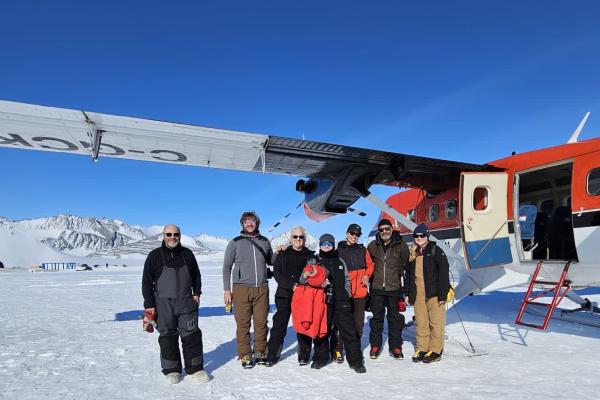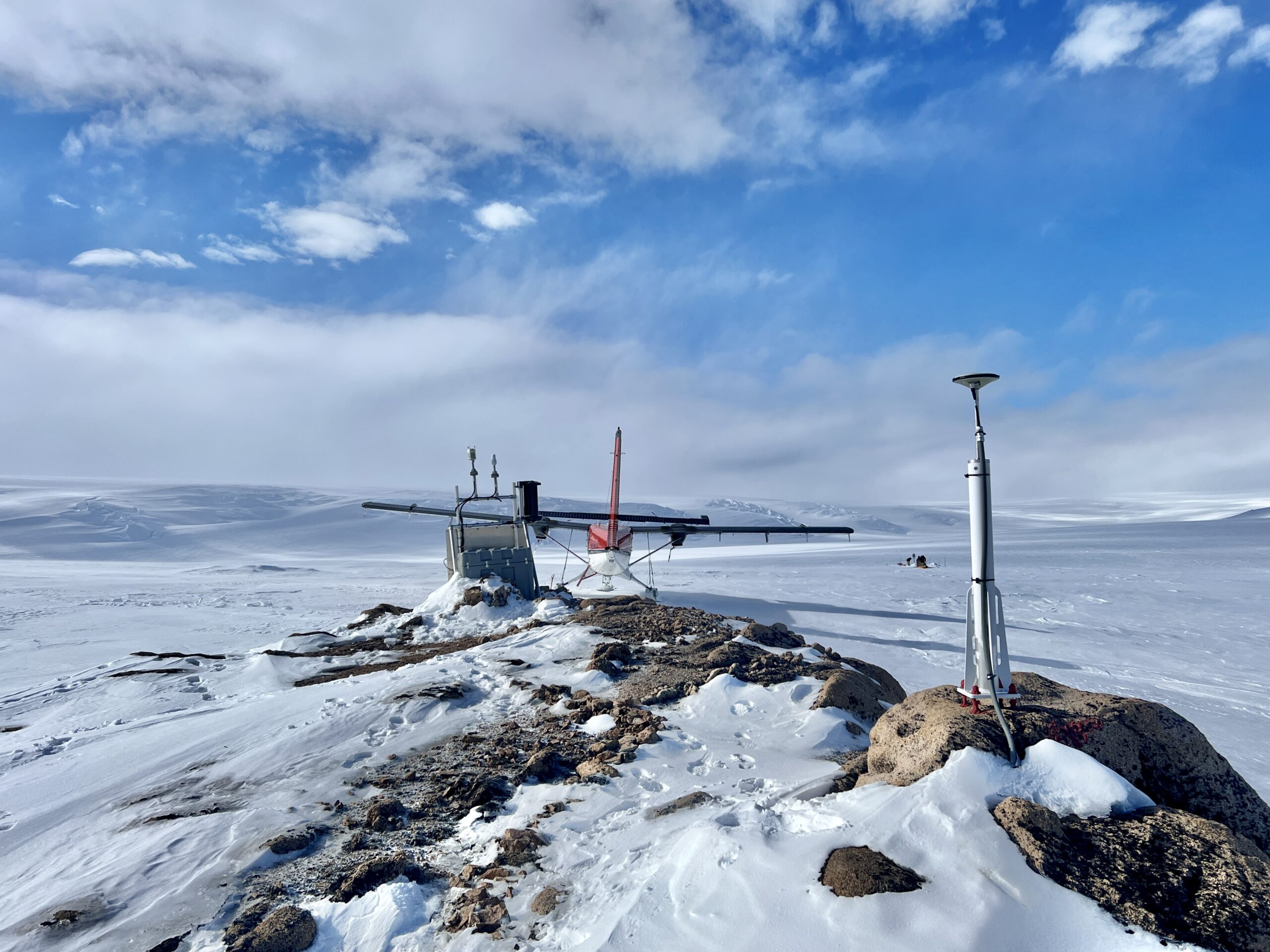2023-2024 ANET-POLENET Field Season Comes to an End

Last November, the ANET-POLENET field team, a group of dedicated scientists and researchers led by Byrd Center Principal Investigator Terry Wilson, embarked on their 2023-2024 field season in West Antarctica.
The expedition commenced with the team assembling in Chile, where they followed a time-honored tradition of visiting Ferdinand Magellan's memorial in Punta Arenas—a ritual involving 'kissing the toe' of the statue, ensuring safe passage to Antarctica.

Union Glacier Camp, operated by Antarctic Logistics & Expeditions (ALE) in the scenic Ellsworth Mountains, was base camp for the expedition.
Early on, the team successfully serviced several vital sites, including Howard Nunatak and Whitmore Mountains, overcoming harsh Antarctic conditions and equipment challenges. These sites, crucial for GNSS and seismic measurements, had desperately needed maintenance due to previous years of missed fieldwork.
As the month progressed, unflyable weather conditions at ALE Union Glacier Camp led the team to shift to the USAP Byrd Camp. In the process, they completed maintenance at three more sites in just three days, showcasing remarkable cooperation and adaptability.
The team continued their mission, servicing sites at Mount Takahe, Bear Peninsula, and Bennett Nunatak. A notable accomplishment was successfully servicing the GNSS and seismic stations at Thurston Island, where they excavated and retrieved three years of precious seismic data.

However, the expedition was not without its setbacks. Visits to Gould Knoll and Martin Peninsula were bittersweet, as the team serviced the GNSS systems but lost invaluable seismic data due to buried equipment.
Despite weather-related challenges, limiting their ability to fly to specific sites, they managed to service additional sites, including Slater Rocks and Miller Crag, adhering to the principle of 'leave no trace' to preserve the pristine polar environment.
